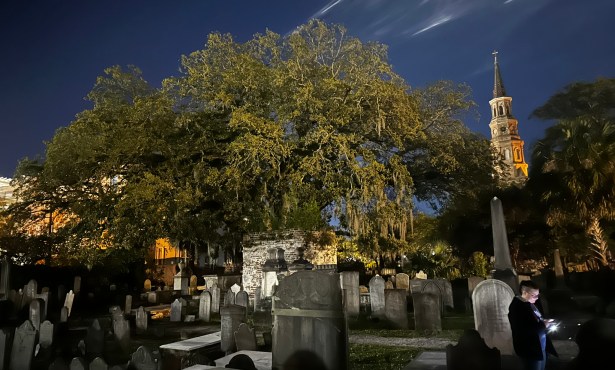Heal the Ocean Studying Montecito’s Shores
Montecito Sanitary District Agrees to Work with Environmental Group
As was announced in last week’s Montage, J’Amy is taking time off to swim in our county’s jury pool, but she filed this brief from the court house steps on Tuesday night…
Last Friday, after some initial trepidations — including a winding discussion of unexpected district expenses, possible staff burden, legal ramifications, community needs, ocean currents, experiment dangers, the state budget, the appropriate use of tax dollars, alternative study sites, and appropriate scientific methodology — the Montecito Sanitary District Board of Directors (shown here leaving their meeting) gave tepid 3-2 approval to collaborating with Heal the Ocean on the environmental group’s upcoming study of shallow-water sewer outfall at the end MSD’s line.
At first blush, the MSD board thought perhaps HTO needed their approval to study their outfall. But as the meeting progressed, it became apparent that the study was moving forward with or without the district’s approval. Suddenly collaboration looked like a good option.
The joint scoping allows HTO access to the sanitary district’s past research, old records, and treated plant-site samples. In exchange, MSD will have early access to HTO’s findings and be able to weigh in on, and perhaps adjust, scientific approaches and techniques.
At a specially called Friday afternoon district board meeting, MSD received a courtesy report about the procedures of upcoming study from Heal the Ocean executive director Hillary Hauser, accompanied by HTO policy analyst Priya Verma (pictured). They were joined at the meeting by UCSB scientists Dr. Libe Washburn, Dr. Carter Ohlmann, and Dr. Patricia Holden, who, as a team, will develop and evaluate the year-long study, expected to begin in July.
HTO’s study will use newly available computerized technology to collect data on the wastewater plume, including being able to track pollutants (if any are found) and track ocean currents via GPS positioning. The goal of the study will be to develop an understanding of where discharged effluent (treated waste) plume goes and how it changes during its course.
This first shallow-water HTO study could serve as a model project for study the some 37 outfalls discharging directly into the ocean off the California coast. Thirteen are designated as short outfall outlets including Carmel/Pebble Beach, located 600 feet from shore; Summerland at 740 feet; and Carpinteria at 1,000 feet. Montecito’s outfall is located 1,550 feet offshore at a depth of 22 feet.
The study, Hauser reported, was made possible by a $330,000 grant from the State of California Water Resources Control Board. The state grant is part of the Watershed, Clean Beaches, and Water Quality Act, signed into law September 20, 2002. Specifically the grant was initiated in response to poor water quality and high of bacteria levels along California beaches.
In November 2002, California voters approved the Water Security, Clean Drinking Water, Coastal and Beach Protection Act of 2002 (Proposition 50) authorizing bonds to fund a variety of water quality improvement projects. In the 2006 state budget, $23 million of Prop 50 funds were appropriated to the Clean Beach Initiative Grant Program and, on Wednesday, April 18, Heal the Ocean is expected to bring some of those funds back Montecito’s way, in the form of this grant to study our shallow-water outfall.
Editor’s Note: In the interest of full disclosure, it should be noted that J’Amy holds a ceremonial position on the honorary board of Heal the Ocean. But she does not participate in the organizations policy making or decision making.



